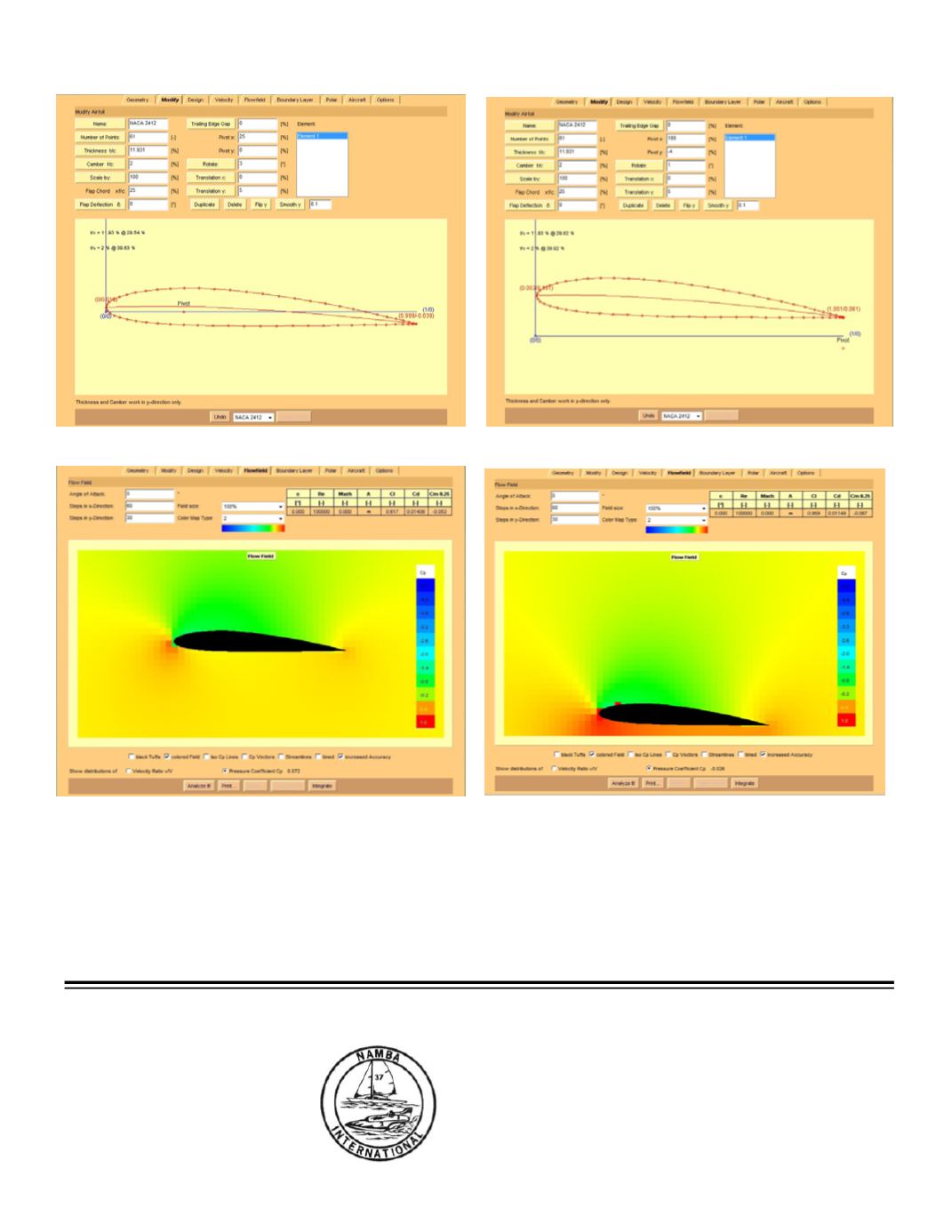
Notice that there is negative to small positive pressure over
the top of the airfoil with positive pressure concentrated toward
the front of the airfoil. See the lift, drag, and moment
coefficients in the table on the top right. At a point ¼ the way
back from the leading edge the moment, -.053, tends to rotate
the airfoil’s leading edge down. This means the center of lift is a
little further back than ¼ of the wing width. The coefficient of
lift is .617. Now let’s see what bringing the airfoil close to a
surface (water for us) does.
The fastest way to get in touch with the
NAMBA Secretary:
1. Text: 760-522-138
2. Telephone 760-522-9138
3. E-mail:
Notice that we now have a strong positive pressure all along
the bottom of the airfoil. Note that the moment around the ¼
cord point is higher at -.087 tending to pitch the nose down
even more. That means the center of the lift force is even further
toward the trailing edge of the airfoil. The coefficient of lift is
higher at .959. However the drag is lower than in the free air
situation; .01149 versus .01408
Suppose we increase the angle of attack when the airfoil is in
ground effect.
Important web site URL’s
1.
2.
3.
/
4. NAMBA web site/RESOURCES
PROPWASH
April 2017
15
2412 airfoil at 3 degrees angle of attack
Flow field in free air
2412 in ground effect The horizontal line represents the ground
Flow field in ground effect


